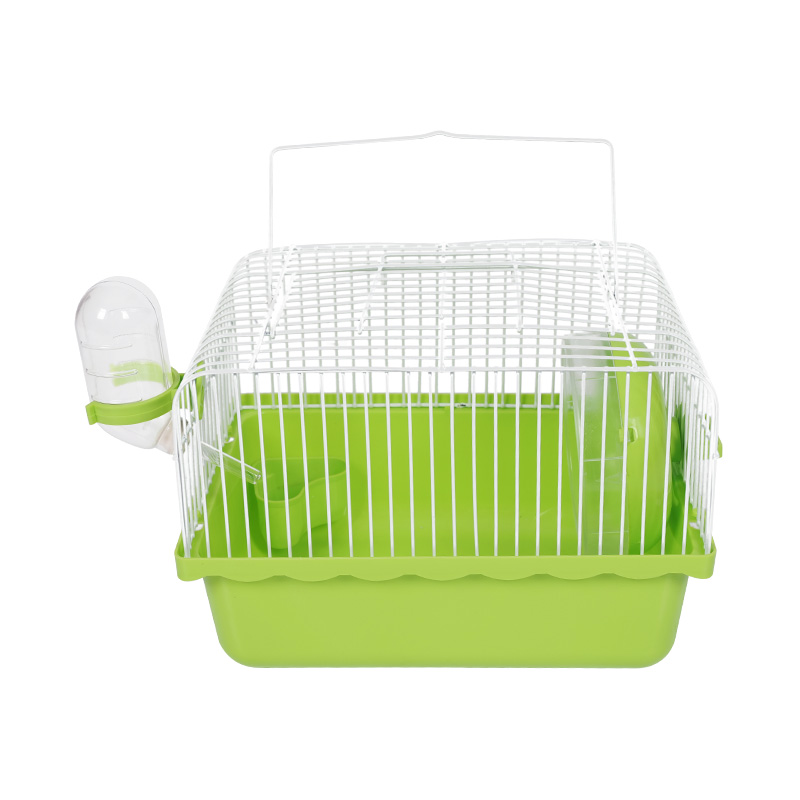Choosing the right Hamster Cage is one of the most important decisions for any hamster owner. A cage is more than just a container—it’s your pet’s home, playground, and safe space. Among the many options on the market, wire cages and acrylic cages (often called “glass tank–style” or “acrylic enclosures”) are the most popular. But which one is better? The answer depends on your priorities for safety, ventilation, cleaning, enrichment, and style. Let’s compare both cage types so you can decide which is best for your hamster and your lifestyle.
1. Ventilation and Airflow
Wire Cages:
Wire cages excel in ventilation. The open bars allow constant air circulation, which helps prevent odors and reduces the risk of respiratory problems. For warmer climates, wire cages keep hamsters cooler and more comfortable.
Acrylic Cages:
Acrylic enclosures have limited airflow since most of the walls are solid. Small vents are usually included, but airflow is not as free as in wire cages. If placed in a hot or humid environment, acrylic cages can trap heat, which is dangerous for hamsters.
Winner: Wire cages, especially in warm homes where airflow is crucial.
2. Chewing and Safety
Wire Cages:
One drawback of wire cages is bar-chewing. Hamsters are natural gnawers, and many will chew the metal bars when bored or stressed. This can lead to dental damage or even broken teeth. In addition, if the spacing between bars is too wide, smaller species like dwarf hamsters might escape.
Acrylic Cages:
Acrylic enclosures have smooth walls that hamsters cannot chew through. This makes them safer for preventing dental injuries and escapes. However, a hamster that is determined to scratch or bite may leave marks on the plastic over time, although this is mostly cosmetic.
Winner: Acrylic cages, for safety against chewing and escapes.
3. Space and Enrichment
Wire Cages:
Many wire cages on the market are relatively small. While they may look spacious in pictures, they often do not provide the floor space that hamsters need. The vertical climbing possibilities are fun for hamsters, but too much height can also lead to falls and injuries.
Acrylic Cages:
Acrylic cages often come in larger sizes or tank-style layouts that allow more bedding depth. This makes them ideal for naturalistic setups where hamsters can dig and burrow. Since hamsters are ground dwellers, having horizontal space is more beneficial than vertical climbing bars.
Winner: Acrylic cages, especially for hamsters that love digging and exploring.
4. Cleaning and Maintenance
Wire Cages:
Cleaning wire cages can be tricky. Food, bedding, and waste can get stuck between the bars, and scrubbing them takes effort. However, since the bottom tray usually slides out, daily spot-cleaning is straightforward.
Acrylic Cages:
Acrylic cages have smooth surfaces, making them easy to wipe down. No bars mean no hidden dirt, and the clear walls allow you to easily monitor cleanliness. On the downside, acrylic surfaces may show water stains and scratches more easily.
Winner: Acrylic cages, for ease of deep cleaning and monitoring.

5. Aesthetic and Display Value
Wire Cages:
Wire cages look more traditional and functional but often lack elegance. They are practical, but some owners feel they don’t blend well with modern home décor.
Acrylic Cages:
Acrylic enclosures are sleek and modern. Their transparent walls provide an unobstructed view of the hamster, making them look more like a decorative terrarium. For hamster enthusiasts who enjoy watching their pets dig and build tunnels, acrylic cages are visually more appealing.
Winner: Acrylic cages, especially for owners who care about aesthetics.
6. Cost and Availability
Wire Cages:
Wire cages are usually more affordable and widely available in pet stores. However, many of the cheaper models are too small, which may require upgrading sooner than expected.
Acrylic Cages:
Acrylic cages tend to be more expensive, especially large models. They are less common in local pet shops but are increasingly available online. While the initial cost is higher, they may provide better long-term value due to size and durability.
Winner: Wire cages, if budget and availability are the top priorities.
7. Noise Levels
Wire Cages:
Hamsters running on wheels or chewing bars can make wire cages noisy, especially at night when hamsters are most active.
Acrylic Cages:
Acrylic cages are quieter overall since there are no bars to rattle. With the right accessories, nighttime disturbances are minimized.
Winner: Acrylic cages, for a quieter living environment.
Final Verdict: Which Is Better?
There is no single “best” choice because it depends on your hamster’s needs and your lifestyle. Here’s a summary:
Choose Wire Cages if:
You live in a warm climate and need maximum airflow.
You are on a budget and want easy-to-find options.
You don’t mind occasional noise or bar chewing.
Choose Acrylic Cages if:
You want a larger, safer enclosure with deep bedding for digging.
You prefer easy cleaning and a modern, stylish look.
You value a quieter environment and want to prevent escapes.
For many hamster owners, acrylic cages are considered the more upscale and enriching option, while wire cages are practical for beginners or those on a budget. The key is ensuring that whichever cage you choose, it provides ample space, proper bedding depth, and enrichment to keep your hamster healthy and happy.


 English
English Español
Español



